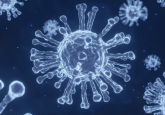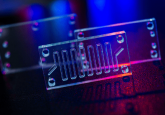Photolithography and DNA tethers used to print cellular messaging environments

CREDIT: UC Berkeley graphic by Olivia Scheideler
Scientists from University of California, Berkeley (CA, USA) have utilized photolithography and DNA tethers to print 2D arrays of cells and proteins, which mimic a range of cellular messaging environments. A team from University of California, Berkeley (UC Berkeley, CA, USA) has developed a novel printing technique which utilizes a DNA tether to attach cells and proteins to a substrate. Paired with this, they used photolithography, a patterning process which uses light, to attach a large number of cells and proteins at once. This novel technique, detailed in Science Advances, has the potential to give us insight into complex cell-to-cell...



